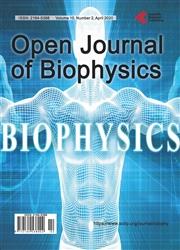Seed Germination and Their Photon Emission Profile Following Exposure to a Rotating Magnetic Field
引用次数: 0
Abstract
A multitude of experiments have applied magnetic fields to plants or seeds and found a variety of different and sometimes contradicting results. A magnetic field generating device called the Chrysalis resonator has been shown to influence the brain activity of human participants, the photon emissions from bacteria, mammalian cell cultures and water. In this experiment sunflower seeds (Helianthus annus) were allowed to begin germination and then exposed to either the field generated by the Chrysalis resonator or a sham condition. Their growth and photon emissions were taken over the next 5 days. It was found that the seeds showed less germination 48 hours after exposure and significantly higher photon emissions when 3 seeds were measured together in a dish, but not if 2 seeds or 1 seed were measured. There were no significant differences in the photon measurements from the water the seeds were germinating in. These results may indicate that the seeds became more sensitive to the presence of neighbouring seeds. The photon emissions results were also significantly impacted by external weather conditions.旋转磁场下种子发芽及其光子发射谱
大量实验将磁场应用于植物或种子,发现了各种不同的、有时甚至相互矛盾的结果。一种名为Chrysalis谐振器的磁场产生装置已被证明会影响人类参与者的大脑活动、细菌、哺乳动物细胞培养物和水的光子发射。在这个实验中,向日葵种子(向日葵)被允许开始发芽,然后暴露在由Chrysalis谐振器产生的田地或假条件下。在接下来的5天里,他们的生长和光子发射被记录下来。研究发现,当在一个培养皿中同时测量3个种子时,种子在暴露48小时后表现出较少的发芽和显著较高的光子发射,但如果测量2个种子或1个种子则不然。种子发芽时水中的光子测量结果没有显著差异。这些结果可能表明种子对相邻种子的存在变得更加敏感。光子发射结果也受到外部天气条件的显著影响。
本文章由计算机程序翻译,如有差异,请以英文原文为准。
求助全文
约1分钟内获得全文
求助全文

 求助内容:
求助内容: 应助结果提醒方式:
应助结果提醒方式:


